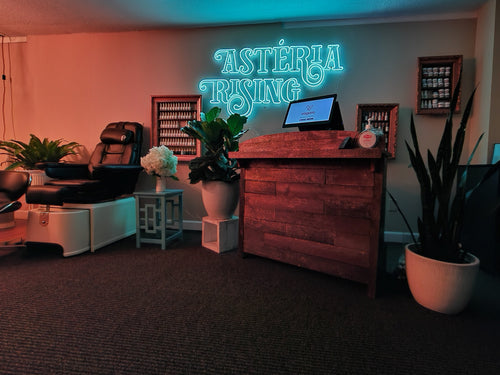LED neon signs are an innovative lighting solution that mimics the look of traditional neon signs while offering several advantages. These signs have become increasingly popular for both commercial and personal use due to their vibrant colors, versatility, and energy efficiency.
Understanding LED Neon Signs
LED neon signs are made using flexible LED strips encased in a silicone tube, designed to emulate the glow of traditional glass neon tubes. Unlike traditional neon, which requires high-voltage electricity to illuminate gas-filled glass tubes, neon signs operate on low voltage and use semiconductor technology to produce light.
How LED Neon Signs Work

-
Construction:
LED neon signs are constructed using LED lights, which emit light when an electric current passes through them. The lights are arranged in a flexible silicone tube, allowing them to bend into various shapes and designs. -
Lighting Mechanism:
When electricity flows through the LEDs, they emit light in a variety of colors. The silicone casing diffuses the light, creating an effect similar to that of glass neon tubes. The use of silicone also makes these signs more durable and weather-resistant. -
Customization:
One of the significant advantages of LED neon signs is their customizability. They can be designed in various shapes, sizes, and colors to suit any aesthetic or branding needs. -
Power Consumption:
LED neon signs are energy-efficient, consuming significantly less power than traditional neon signs. This makes them cost-effective for long-term use.
Advantages of LED Neon Signs
-
Energy Efficiency:
LED neon signs consume up to 90% less energy than traditional neon signs. This energy efficiency translates into lower electricity bills and a smaller carbon footprint. -
Safety:
LED neon signs are much safer than traditional neon signs. They operate on low voltage, reducing the risk of electric shock. Additionally, they do not contain harmful gases like neon or argon, which are used in traditional signs. -
Durability:
The silicone tubing used in LED neon signs is more durable than glass, making them less likely to break. This durability makes them suitable for both indoor and outdoor use, as they can withstand various weather conditions. -
Long Lifespan:
LED neon signs have a longer lifespan than traditional neon signs, often lasting up to 50,000 hours or more. This longevity reduces the need for frequent replacements. -
Easy Installation:
The lightweight nature of LED neon signs makes them easy to install. They can be mounted on walls, hung from ceilings, or placed on stands without requiring complex installation processes. -
Variety of Colors and Effects:
LED technology allows for a broader spectrum of colors and effects than traditional neon. Many LED neon signs can also be programmed to change colors, flash, or even pulse, adding an extra layer of creativity. -
Low Maintenance:
Unlike traditional neon signs, which may require refilling gas or repairing glass tubes, LED neon signs are low maintenance. They can be easily cleaned with a damp cloth. -
Environmental Impact:
As LED technology continues to evolve, manufacturers are focusing on creating eco-friendly LED neon signs. These signs often use recyclable materials and do not contain harmful substances, making them a greener choice.
Applications of LED Neon Signs
LED neon signs are versatile and can be used in various settings, including:
-
Commercial Use:
Many businesses utilize LED neon signs for advertising, branding, and attracting customers. Restaurants, bars, and retail stores often display colorful neon signs to create an inviting atmosphere. -
Home Decor:
Homeowners are increasingly using LED neon signs as decorative elements in their living spaces. From personalized name signs to quirky quotes, these signs add a unique touch to any room. -
Events and Parties:
LED neon signs are popular for events like weddings, birthdays, and parties. They can be customized with names, dates, or themes, enhancing the overall decor. -
Art Installations:
Artists are embracing LED neon technology to create stunning light installations. The flexibility of LED neon allows for intricate designs that were previously challenging to achieve with traditional neon.
Conclusion
In summary, LED neon signs offer a modern alternative to traditional neon signs, combining aesthetic appeal with energy efficiency, safety, and durability. Their ability to be customized makes them suitable for a wide range of applications, from commercial advertising to home decor. As technology continues to advance, LED neon signs are likely to become even more prevalent, transforming the way we illuminate spaces.




